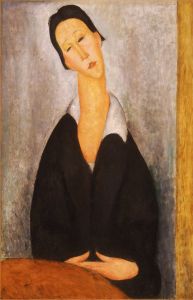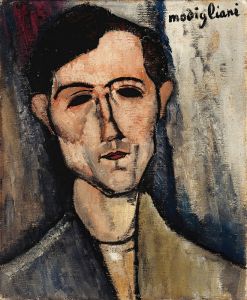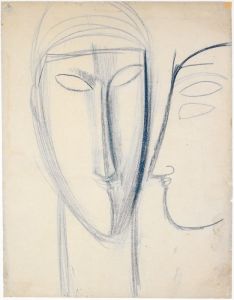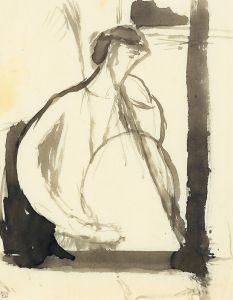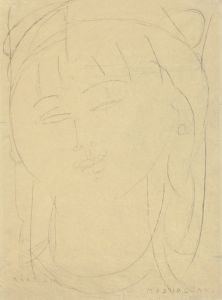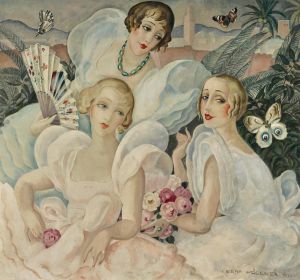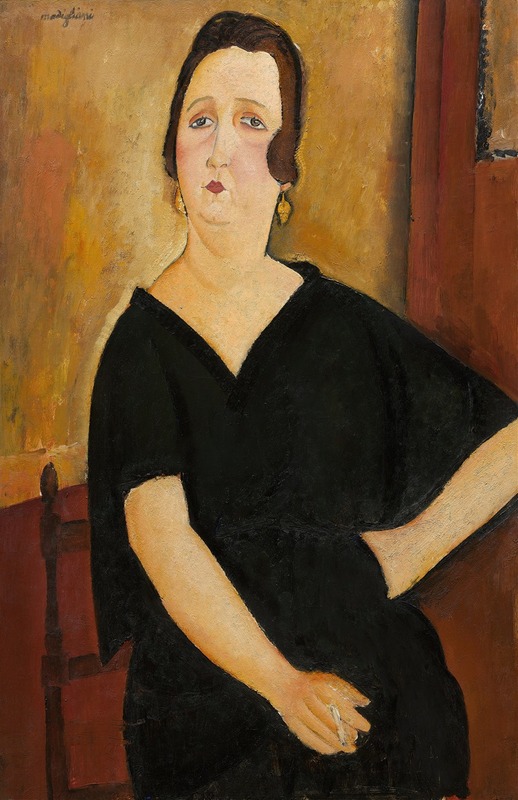
Madame Amédée
A hand-painted replica of Amedeo Modigliani’s masterpiece Madame Amédée, meticulously crafted by professional artists to capture the true essence of the original. Each piece is created with museum-quality canvas and rare mineral pigments, carefully painted by experienced artists with delicate brushstrokes and rich, layered colors to perfectly recreate the texture of the original artwork. Unlike machine-printed reproductions, this hand-painted version brings the painting to life, infused with the artist’s emotions and skill in every stroke. Whether for personal collection or home decoration, it instantly elevates the artistic atmosphere of any space.
Amedeo Modigliani, an Italian painter and sculptor, is renowned for his distinctive style characterized by elongated forms and portraits that capture the essence of his subjects. One of his notable works is "Madame Amédée," a portrait that exemplifies his unique approach to portraiture.
"Madame Amédée" was painted during a period when Modigliani was deeply immersed in the Parisian art scene. He moved to Paris in 1906, where he became associated with the avant-garde community, including artists like Pablo Picasso and Constantin Brâncuși. Modigliani's work was influenced by a variety of sources, including African art, which was gaining popularity in Europe at the time, as well as the works of earlier Italian Renaissance painters.
The painting "Madame Amédée" is a portrait that reflects Modigliani's signature style. His portraits are known for their elongated necks and faces, almond-shaped eyes, and a sense of introspection. These stylistic choices are evident in "Madame Amédée," where the subject is depicted with a graceful elongation that adds a sense of elegance and poise. The use of color in the painting is also notable, with Modigliani employing a muted palette that enhances the serene and contemplative mood of the portrait.
Modigliani's technique involved drawing directly onto the canvas with a brush, which allowed for a fluidity and spontaneity in his work. This method is apparent in "Madame Amédée," where the lines are both precise and expressive, capturing the personality and presence of the sitter. The background of the painting is typically simple, focusing the viewer's attention on the subject and allowing the emotional depth of the portrait to emerge.
The identity of Madame Amédée, like many of Modigliani's subjects, is not widely documented, which adds an element of mystery to the painting. Modigliani often painted friends, patrons, and acquaintances from his social circle, and it is likely that Madame Amédée was someone from his immediate environment in Paris. The lack of specific historical records about her identity does not detract from the painting's impact; rather, it invites viewers to engage with the work on a more personal and interpretive level.
Modigliani's work, including "Madame Amédée," was not fully appreciated during his lifetime. He struggled with poverty and health issues, and his art did not gain significant recognition until after his death in 1920. Today, Modigliani is celebrated as a master of modern art, and his portraits are highly valued for their emotional depth and innovative style.
"Madame Amédée" stands as a testament to Modigliani's ability to convey the inner life of his subjects through his distinctive artistic vision. The painting is an example of how Modigliani's work transcends the specific identity of the sitter, offering a universal exploration of human emotion and expression. As with many of his portraits, "Madame Amédée" continues to captivate audiences with its timeless beauty and profound simplicity.





